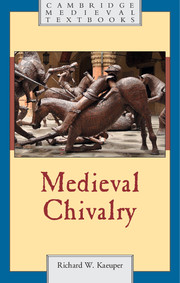Book contents
- Frontmatter
- Dedication
- Contents
- List of figures
- Acknowledgments
- Part I An approach to chivalry: was it real and practical?
- Part II Three broad chronological phases
- 3 Phase one: knighthood becoming chivalry
- 4 Phase two: knighthood and chivalry fuse
- 5 Phase three: chivalry beyond formal knighthood
- Part III The privileged practice of violence
- Part IV Chivalry, governing institutions, and ideals
- Part V The world of chivalric emotions
- Reflections
- Select Bibliography
- Index
4 - Phase two: knighthood and chivalry fuse
from Part II - Three broad chronological phases
Published online by Cambridge University Press: 05 August 2016
- Frontmatter
- Dedication
- Contents
- List of figures
- Acknowledgments
- Part I An approach to chivalry: was it real and practical?
- Part II Three broad chronological phases
- 3 Phase one: knighthood becoming chivalry
- 4 Phase two: knighthood and chivalry fuse
- 5 Phase three: chivalry beyond formal knighthood
- Part III The privileged practice of violence
- Part IV Chivalry, governing institutions, and ideals
- Part V The world of chivalric emotions
- Reflections
- Select Bibliography
- Index
Summary
That the earliest of our set of model knights (discussed in Chapter 2) date from this second phase of chivalric history can cause little surprise. More surviving evidence does not always prove new social phenomena, yet some correlation between evidence and historical change likely exists and is, as we will see, especially likely in a second chivalric phase. We have no trouble picturing a figure such as Richard Lion-Heart and his armored contemporaries as knights, and quickly form mental images of Arthurian heroes such as Lancelot. We can even assign the knightly label with confidence to William the Conqueror or any of the Normans of his generation active across Europe more than a century earlier. Building on the undoubted changes from the ninth and tenth centuries, this second phase (c. 1050–c. 1300) brings classic chivalry fully to life. Elite social status for knights became a given and a valorizing and inclusive ideology, expanding and extending earlier developments, fused with an older military function. The results both reflected and shaped structural dimensions as chivalric ideals and practices interacted powerfully with the vibrant socioeconomic, religious, and political changes of this central period of medieval history. Crucial new strands intertwined, adding strength to an existing older core.
Of course the chronology often remains approximate, varying region by region; blurred demarcation lines persist. Some changes that will fully appear in the third phase of chivalric development (to be considered in the following chapter) began to come tellingly to the surface by the end of the thirteenth century. Each line of inquiry we follow could justly demand its own monograph (which some have truly received), but the goal here remains thematic overview rather than encyclopedic particularity. Viewing the forest can reasonably hold our attention as much as any individual stand of trees. As before, discussion is intended to set powerful and in some cases well-known phenomena within a developing chivalric function, ideology, and status, rather than to adumbrate topics as freestanding subjects. Relying on useful clusters of evidence, a first section will serve as a brief reminder that function retained its military core – never exclusive, but ever central.
- Type
- Chapter
- Information
- Medieval Chivalry , pp. 85 - 120Publisher: Cambridge University PressPrint publication year: 2016



